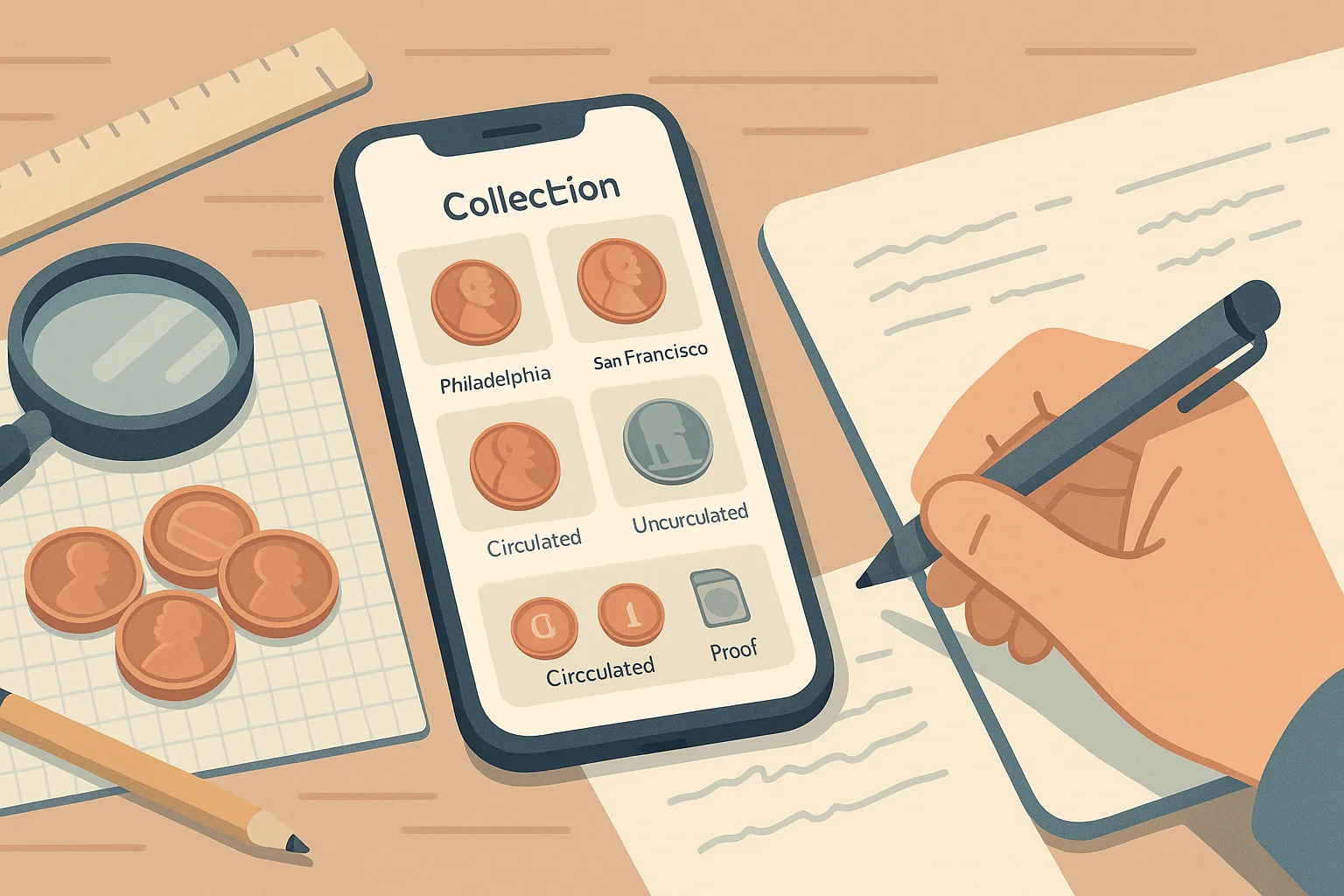Pennies are often dismissed as pocket clutter, but within American numismatics, these small copper coins tell larger-than-life stories. From historical turning points to minting mishaps that produced million-dollar rarities, U.S. pennies offer a fascinating glimpse into the country’s past. For collectors, some issues represent not just financial value but also cultural heritage—tiny metal artifacts that capture moments of innovation, scarcity, and error.
This guide explores rare wheat pennies with the lowest mintages ever made, tracing their origins and explaining why they remain so captivating to coin enthusiasts.

What Makes a Penny Rare?
Not every old penny is valuable. A penny’s worth depends on a combination of several factors, and the rarest coins usually share more than one of these traits:
Low Mintage Numbers – When only a small number of coins are produced, their scarcity immediately boosts collector demand.
Mint Errors – Mistakes in the striking process—such as doubled dies, off-center strikes, or the wrong metal planchet—create unique coins that stand out.
Historical Significance – Coins tied to major national events, design changes, or policy shifts tend to attract interest.
Condition (Grade) – Even a rare penny may be worth little if it is heavily worn. High-grade examples, especially uncirculated or proof coins, often command exponential premiums.
Survival Rate – While mintage numbers matter, how many coins survive today is just as important. Many rare pennies were melted, lost, or heavily circulated.
Understanding these key factors gives collectors a roadmap for what to look for in pocket change, coin rolls, or inherited collections.
Rarity Meets Value
To highlight how rarity transforms ordinary cents into highly prized assets, consider this: the face value of every penny is just one cent, yet the rarest examples fetch hundreds of thousands or even millions in auctions. This dramatic leap underscores why pennies remain a cornerstone of American coin collecting.
The Rarest US Pennies Ever Made
Some U.S. pennies have achieved legendary status because of their rarity, error features, or role in history. Below are the standout examples every collector dreams of finding.
1. 1943 Copper (Bronze) Wheat Penny
During World War II, the U.S. Mint replaced copper with zinc-coated steel for penny production to conserve resources. However, a small number of bronze planchets from 1942 accidentally made their way into the presses in 1943.
Why it’s rare: Fewer than 30 confirmed examples are known today.
Value: Depending on grade, these coins can fetch from $100,000 to well over $1 million. In one Heritage Auctions sale, a high-grade 1943 bronze cent sold for $1.7 million.
This coin is often regarded as the “Holy Grail” of modern U.S. numismatics.
2. 1909-S VDB Lincoln Wheat Penny
When the Lincoln cent was first introduced in 1909 to honor Abraham Lincoln’s 100th birthday, designer Victor David Brenner placed his initials—VDB—on the reverse. The initials were quickly deemed too prominent and removed, making the San Francisco issue incredibly scarce.
Mintage: Only 484,000 struck.
Value: Ranges from $700 in circulated grades to over $50,000 in pristine red uncirculated condition.
Its significance as the first Lincoln cent further cements its place among the rarest.
3. 1955 Doubled Die Lincoln Cent
Few error coins are as famous as the 1955 doubled die penny. A misalignment during the hubbing process created dramatic doubling across the date and inscriptions.
How to spot: Doubling is especially visible on “LIBERTY” and “IN GOD WE TRUST.”
Value: Circulated examples can sell for $1,000+, while uncirculated coins often bring $15,000–$25,000.
Because the error is bold and easy to see without magnification, it became one of the most widely collected U.S. error coins.
4. 1969-S Doubled Die Lincoln Cent
This doubled die is even rarer than the 1955 version. At first, some examples were thought to be counterfeits, but authentication proved otherwise.
Value: Known specimens regularly achieve six-figure auction prices, sometimes exceeding $500,000.
Significance: Dramatic doubling on the date and motto makes it unmistakable for trained eyes.
This penny demonstrates how late 20th-century mint errors can rival classic rarities in desirability.
5. 1877 Indian Head Cent
Before the Lincoln series, the Indian Head penny dominated U.S. coinage. The 1877 issue is especially prized due to its extremely low mintage.
Mintage: Only 852,500 struck—tiny compared to most other years.
Value: Even heavily worn examples bring $1,000+, while mint state coins exceed $10,000.
Collectors consider it the key date of the Indian Head series, much like the 1909-S VDB for the Lincoln series.
6. 1922 “No D” Lincoln Cent
All 1922 pennies were struck in Denver, but due to die polishing and wear, some lost their “D” mint mark entirely. These “No D” cents are highly collectible.
Spotting the rarity: Look for coins where the mint mark is completely missing but other details remain strong.
Value: From $500 in lower grades to more than $20,000 for top examples.
This oddity showcases how mint production quirks can elevate value dramatically.
Quick Value Comparison Table
Penny Type | Estimated Value Range | Key Features |
1943 Copper Wheat Penny | $100,000 – $1,700,000 | Bronze planchet in WWII steel year |
1909-S VDB Lincoln Cent | $700 – $50,000+ | Low mintage, first Lincoln cent |
1955 Doubled Die Cent | $1,000 – $25,000+ | Bold doubling visible |
1969-S Doubled Die Cent | $100,000 – $500,000+ | Dramatic doubling on motto/date |
1877 Indian Head Cent | $1,000 – $10,000+ | Scarce Indian Head key date |
1922 “No D” Lincoln Cent | $500 – $20,000+ | Mint mark missing error |
These pennies prove that a one-cent piece can hold extraordinary value — all you need is the right tool to identify what you found.

How to Identify and Track Rare Pennies Today
Owning one of the rare pennies highlighted earlier is thrilling, but accurately identifying and managing them requires knowledge and reliable tools. Many collectors start with a magnifying glass and reference books, but technology now makes the process faster, easier, and more precise.
Traditional Identification Methods
Magnification and Lighting
A jeweler’s loupe (10x–20x) and strong desk lighting allow collectors to spot key details like doubled dies, mint marks, or die cracks.Weight and Dimensions
Some rarities, such as the 1943 bronze penny, reveal themselves through weight differences compared to standard issues. A digital scale and calipers are essential.Reference Guides
Resources like the Red Book or PCGS price guides remain trusted companions, providing context, historical notes, and value charts.Professional Grading
Services like PCGS and NGC certify authenticity, assign grades, and secure coins in protective holders. Rare coins often sell for more once graded.
Using Coin ID Scanner for Modern Collecting
For hobbyists and serious numismatists, the Coin ID Scanner app (available on Android and iOS) brings together features that streamline coin identification and collection management:
Photo-Based Identification: Upload or snap a picture; the app generates a detailed coin card with year, country, minting details, weight, diameter, composition, and estimated price.
Extensive Database: Over 187,000 coins worldwide, covering Lincoln cents, Indian Heads, and even modern global issues.
Smart Filters (Premium): Narrow searches by date, mint mark, composition, or error type for faster results.
AI Coin Helper: Provides guidance in spotting errors like doubled dies, off-center strikes, or mint mark oddities.
Digital Collection Management: Create and organize your personal catalog, track condition, and store notes.
Educational Value: Each scan delivers historical context, encouraging collectors to connect coins with broader events.
With this tool, even beginners can confidently identify coins that could otherwise slip past unnoticed.
From Spare Change to National Treasures
Rare pennies like the 1943 bronze Wheat cent or the 1909-S VDB are not just collectibles—they’re pieces of American history. They reflect moments of resource scarcity, minting decisions, and evolving artistry. For collectors, each coin tells a story of its time, often becoming a bridge between hobby and history.
By combining traditional numismatic methods with modern digital tools like Coin ID Scanner, collectors at every level can ensure they don’t miss hidden treasures in rolls, jars, or inherited collections. The next million-dollar penny may be sitting in someone’s desk drawer right now—waiting to be recognized.





